For 58 years, between 1962 and 2010, Myanmar (alternatively known as Burma) was pretty much inaccessible. Though efforts were made in the 90s to encourage tourism to the Southeast Asian country, the prospect of visiting a harsh military dictatorship widely-considered to be one of the most repressive in the world did not quite appeal to a lot of tourists.
Following the democratization of the country in the early 2010s, things aren’t perfect yet, to say the least, but people have steadily come to discover the wonders that Myanmar has to offer. Of course, those tourists did not discover the beauty of Burma; Rudyard Kipling, the author of the Jungle Book toured Burma for 3 days all the way back in 1889 and fell in love with the beauty of the land, the majestic temples, the good humor of the natives and the Burmese women, who he thought were particularly beautiful. Some 130 years later, we must say, we can relate.
Here is everything you absolutely must do and try in Burma:
Visit the Shwedagon Pagoda
The majority of the people in Myanmar are Theravada Buddhists, the oldest extant school of Buddhism and one that spread to Southeast Asia from the isle of Sri Lanka. Two of the major cultural exports of Burma are rooted in this religious tradition: mindfulness meditation and the Vipassana Movement.
The most important and striking Buddhist temple in Myanmar is the Shwedagon Pagoda in Yangon (Rangoon), a complex of beautiful, gold-plated stupas (dome or bell-shaped shrines containing holy relics), with a tremendous stupa in the center, which is said to contain the hair of the historical Buddha (Siddharta Gautama), as well as relics of three Buddhas that preceded him.
The complex is “guarded” by giant Chinthes, leonine statues that have a similar role to the Chinese “lion dogs”. Within are eight shrines dedicated to each day of the week (Wednesday is split in two) and it is customary for visitors to pray at the shrine dedicated to the day they were born by washing a statue of the Buddha in that shrine and giving a tribute of flowers. Be advised there is a dress code for visitors.
Hit the markets
Also in the former capital city of Yangon are dozens of street markets where you can find a large variety of fresh produce, fish, clothes, crafts and delicious street food. There simply is no better place or way to experience the vibrant city life and culture of Myanmar than to literally breathe in the scents of the marketplace.
Boat across Inle Lake
Guided boat tours are available around Inle Lake that will take you to some truly amazing sites around the lake, including the ancient pagoda city of Shwe Indein, the Nam Pan market with peddlers bringing their wares in by boats, floating gardens and Pindaya Caves, a series of caverns densely-populated by statues of the Buddha.
View the marvel of Bagan
The ancient and ruined city of Bagan used to be the heart and capital of the empire that would become Burma. At its height, the city was so rich that it housed about 10,000 temples and pagodas, of these, more than 2,000 still dot the plains of Bagan and can be visited.
The many temples, differing in architecture, size and style can either be visited on foot or appreciated from above in a hot air balloon that affords a vista of the entire lost city in all its grandeur.
Taste Myanmar
Myanmar is located between India, Thailand, and China, and you know just from its geographical location between these three culinary empires that the local cuisine is going to be great. Here are three dishes you have got to taste in Myanmar:
Mohinga
It may not look the part, but mohinga is traditionally eaten as breakfast. Mohinga is a soup of fish broth and chickpea flour eaten with ginger, noodles, banana pith, and boiled eggs, and is considered by many to be the national dish.
Tea leaf salad
Another popular dish is lephet thoke, a salad consisting of fermented tea leaves that are slightly bitter and tart, served with garlic and crunchy legumes, and sometimes mixed with other vegetables, such as tomatoes and cabbage.
Curry
The curries of Myanmar are much milder when compared to those of neighboring India and Thailand, which makes them just perfect for those with a delicate palate. A Burmese curry dish can be based on a large variety of vegetables, legumes, seafood, and meats and are doled out in very generous servings.

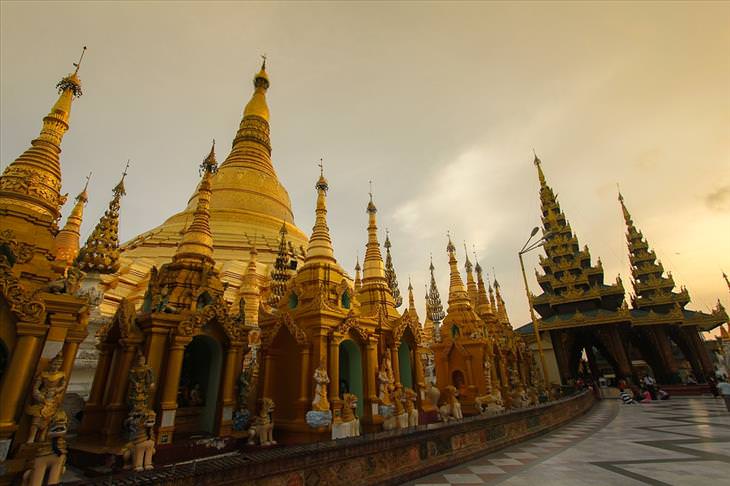
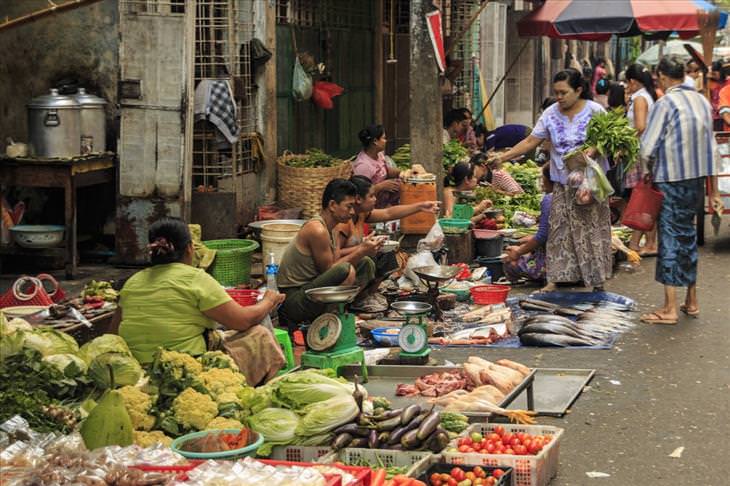
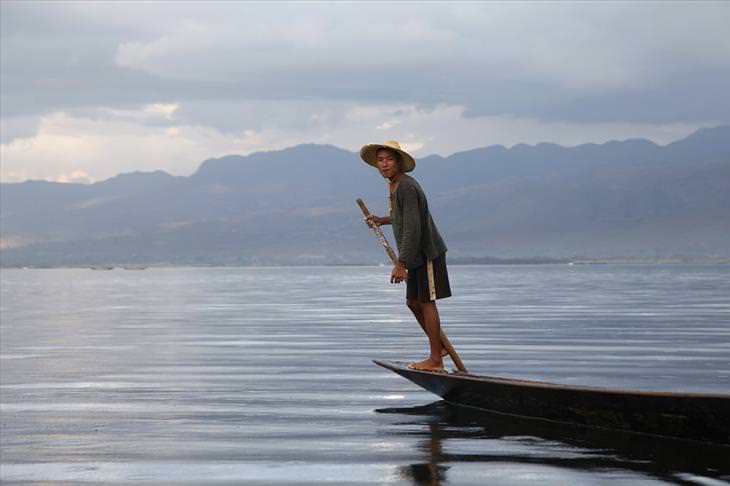
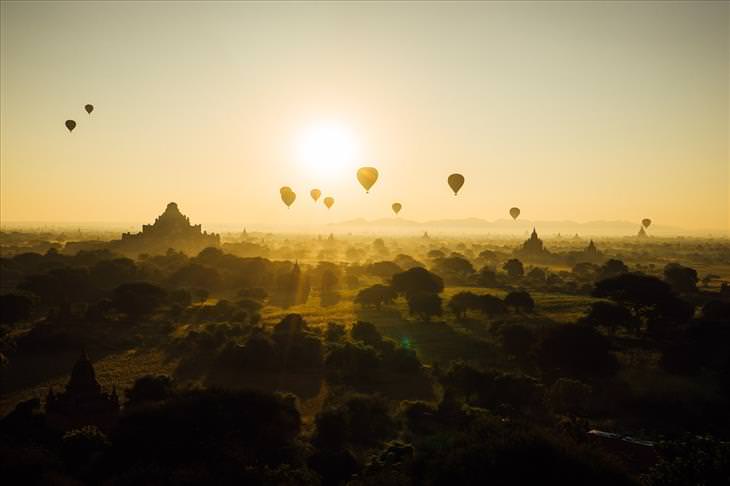
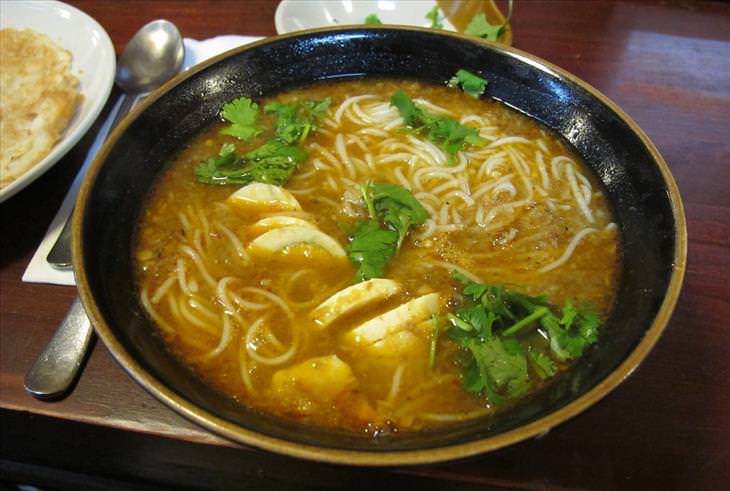 Source: Gary Stevens
Source: Gary Stevens Source: takasphoto.com
Source: takasphoto.com Source: Ron Dollete
Source: Ron Dollete